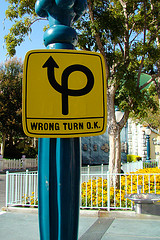When Do I Need the Help of an EFT Practitioner?
[AnaMaria Herrera aka “Agent EFT,” is a California based EFT practitioner. She publishes ‘Success In Your Fingertips' a weekly E-zine for business owners and professionals to reach their goals with ease and elegance using Emotional Freedom Technique. Info at www.gotEFTsystem.com]
 photo by Thewmatt |
In the many years I’ve worked as a healthcare practitioner, it still amazes me the trap that health professionals get into of assisting others with their conditions and yet not reaching out and getting treatment for themselves!
I don’t think this is a phenomenon that occurs in just one field of others’ medicine or service, but rather it seems to happen to many practitioners, solo professionals and service professionals without them realizing it.
The most disparaging part is that while practitioners are assisting others with their conditions, challenges and goals, many of these practitioners themselves also have areas of their lives that are desperately requiring treatment. Whether they have unresolved grief from a family member passing, past negative memories and traumas that haven’t been cleared or even a secret goal or desire that remains unfulfilled, the practitioners are often in ‘I’m the Healer Mode’ and fail to get care for themselves.
Many will plug along until a breaking point or frustrating incident tilts them over the edge. Only then will they seek treatment for the nagging issue or condition.
How do I know? Both from observing other professionals in various fields and having been guilty of this many times myself!
In fact just recently I sent a “SOS” email to my EFT Practitioner with a couple of challenges (some chronic, some more recent) I was having and signed up for a series of EFT sessions.
You know the first thought I had a few minutes into our session?
“Why did I wait this long to make an appointment for an EFT session for myself?”
But how does one know when he or she needs a practitioner? For this article I’m going to focus on those using EFT (Emotional Freedom Technique), whether the person is an EFT Practitioner with a private practice or someone using EFT on themselves.
Here are 3 simple signs that a session with an EFT Practitioner might be needed:
1. Feeling stuck at an issue or condition or a past event
No matter how much tapping you have done on yourself, no matter how many ebooks you have read or workshops you’ve attended, the issue or condition remains. This condition can be emotional, physical or even a past trauma or memory.
2. You aren’t reaching a goal you’ve set for yourself
Perhaps you’ve had great success in your business life but you feel lack in your love life. Or you’ve been stuck in a job you hate for years, and no matter how much you try, you find yourself feeling there is no way out. It can even be a secret desire or wish that’s never been given focus: writing a book, speaking in public, learning a second language or starting your first business.
3. You aren’t sure if you are doing EFT correctly
I’ve had many a person email me sharing that after downloading a free ebook or attending an hour workshop, they lament, “I’m not sure if I’m doing EFT right.” An EFT lesson with a skilled practitioner who has taught others, can greatly increase your confidence and results.
No matter how long you’ve been an EFT Practitioner or doing EFT on yourself, chances are there’s an area (or two!) in your life that’s less than ideal. The good news is you can reach out to the many skilled, wonderful EFT Practitioners that are in practice and get the assistance and support you deserve to have.











